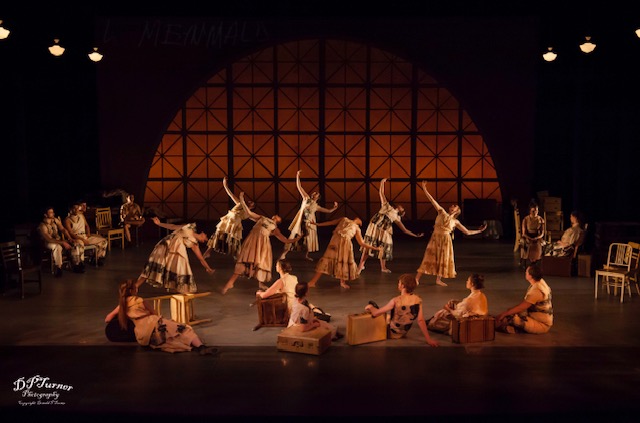Oral histories are among the most prized resources in historical research. They capture stories that otherwise might not have been written or lost. Chronicling the history of immigration in the U.S. is enriched by the stories of those who decided to leave their homelands, travel great distances often in difficult circumstances and arrive in a place where they might be permanently separated from their heritage, background and culture. Many immigrants quickly and outwardly adapt to their new environment but even as they assimilate into their new American homes many also still remember, preserve and identify proudly with the legacies of their homelands.
For many years, Ellis Island in New York City was the port of entry for the era of the great migration to America. But even as the old institutional architecture of what was once America’s foremost center for immigration services started to decay and crumble in the 1970s, a government project to collect oral histories from immigrants – including many who came during the peak of newcomers arriving in the U.S. By the 1990s, some 2,500 oral histories were collected. Virtually everyone whose immigration story was documented is no longer alive but their experiences will always be accessible even to the public. Incidentally, there are efforts to save Ellis Island, such as this organization.
This week, Repertory Dance Theatre (RDT) will present a new evening-length production of Six Songs from Ellis, which incorporates and synthesizes details and fragments from oral histories collected from 85 individuals, which are housed in the Ellis Island National Museum of Immigration/Oral History Library. Conceived and choreographed by Marsha Fay Knight and directed by Leigh Selting, the multi-genre dance theater production features 10 actors, nine dance artists, audio, music and video projections, with text coming exclusively from the recorded words of the immigrants who participated. The production will have three performances April 21-23 at 7:30 p.m. daily in the Jeanné Wagner Theatre of the Rose Wagner Center for Performing Arts.
Knight, who is on the dance faculty at the University of Wyoming in Laramie, has worked on iterations of this project for many years, beginning shortly after the Ellis Island museum opened in the 1990s. The first production was presented in 2009, followed by a national tour in 2018. The prospects are a wonderful melding of historical research and artistic performance, highlighting dance’s capabilities to be presented as a dynamic, credible work of creative nonfiction.
In a program note, Knight aptly summarizes the thematic and creative purposes of the work: “Immigration and refugee crisis are critical topics now as they were 100 years ago, beckoning reflection of whom we are and the true diversity of our constitution. Attitudes toward access and response to need and crisis can benefit from stories – inspiring, cautionary and human – of those who helped build this country.” Despite the aggressive voices and policies that some have taken to curb, complicate and even eradicate the quintessential character of immigration in fhe nation’s history, the numbers fortify the resilience of the truth about immigration’s central place in American history. As Pew Research Center summarizes, the U.S. has more immigrants than any other country on the planet and currently the U.S. accounts for one.fifth of the global total if migrants. In the last 50 years, the number of immigrants living in the U.S. has quadrupled. The foreign-born population stands at more than 45 million, which accounts for at least 13.7% of the U.S. population, nearly triple the share (4.8%) in 1970.
Knight has cast the six songs as the critical steps in the journey of migration. The first starts in the homelands of immigrants with The Walk Away, followed in sequence by The Song of Flight, Water Under Foot, Landing on Two Feet, A Change of Current, and finally, At the Lady’s Feet. For example, the Song of Flight highlights stories of those who fled during The Holocaust in World War II as well as Armenians who were affected by the events of 1915, which led to mass killings during World War I and the Balkan Wars which precipitated the collapse of the Ottoman Empire. The third Somg highlights the experiences of the long transatlantic voyage while the fourth documents the experiences of arriving at Ellis Land. A Change of Current chronicles those instances where some immigrants could not proceed for various reasons. Finally, At the Lady’s Feet captures the reflections of immigrants upon viewing the Statue of Liberty in the New York harbor and how they progressed to putting their own stakes in their new home.
In addition to the nine dance artists, eight of whom come from RDT, the main actors for each song, respectively, are Tyler Fox, Jonah Kirkhart, Benjamin Raymant, Aria Sage, Olivia Buck and Smith Hannah Staudinger. Other supporting actors are Anne Cullimore Decker, Karineh Hovsepian, Andrew Maizner and Jon Pezely.
Likewise, the music accompanying each theatrical section evokes the nations and cultures of immigrants — many of whom came from Eastern, Central and Southern Europe – and who came during the period when Ellis Island was most heavily used as the port of entry for immigrants. This includes Armenian, Bulgarian, Rumanian, French, Polish, Ukrainian and other nationalities m, as well as klezmer, folk songs and arrangements by contemporary ensembles and bands.
In addition to the live performances, the production will be made available for streaming video on demand, with a purchased ticket. For more information, see the RDT website.


